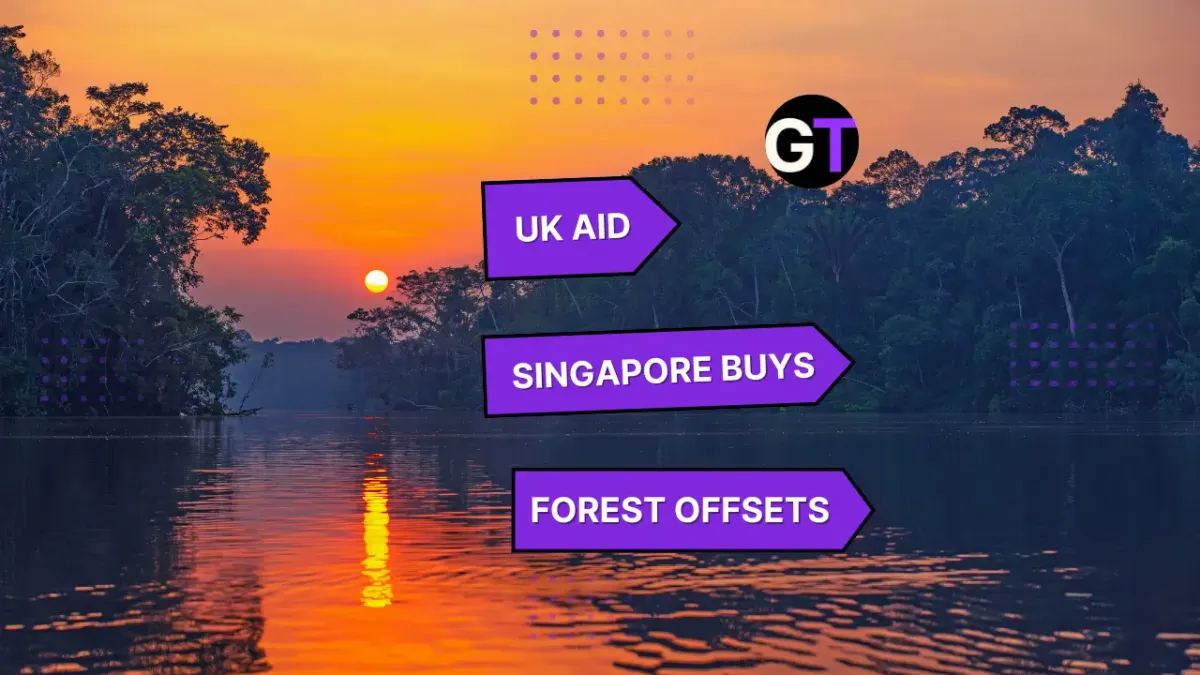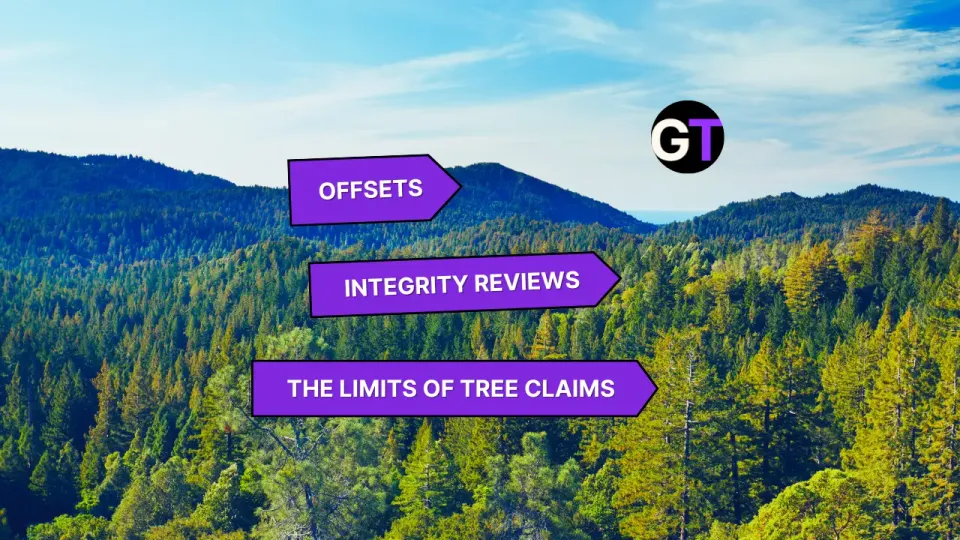UK Aid, Singapore Buys and the Debate Over Forest Offsets
From UK offsets to REDD+ reform and Singapore’s carbon spree, this week’s forest finance roundup follows the money—and the questions.

UK Nature Aid Hits Record £800M—But at What Cost?
The UK’s climate aid for nature hit an all-time high of nearly £800 million last year, driven largely by a single £153.9M injection into controversial carbon-offsetting schemes. This massive investment helped keep the UK on track to meet its five-year, £3 billion nature finance pledge. But here’s the kicker: nearly half of last year’s forest finance came from one carbon credit program, despite growing doubts about the integrity and impact of such offsets.
💬 If half of the UK’s forest finance now hinges on offsets, what exactly are we counting as “nature protection”?
👉👉 Read more on Carbon Brief
Brazil's Jurisdictional REDD+: A Climate Solution or Market Mirage?
Brazil is scaling up Jurisdictional REDD+ (JREDD+)—a public climate policy that tracks emissions across entire states, not single parcels, and rewards jurisdictions for verified drops in deforestation. Supporters call it a science-backed fix to scale forest finance with strong safeguards. Critics warn it mirrors private carbon offset markets already mired in controversy. So which is it?
💬 What would credible jurisdiction-wide climate finance actually look like—and are we there yet?
👉👉 Read more on Mongabay
Bangladesh Boosts Environmental Governance with SIDA Support
A new SIDA-funded initiative aims to upgrade Bangladesh’s environmental governance through institutional strengthening, river pollution monitoring, mangrove restoration, and the creation of a Wildlife Trust Fund. With targeted work in ecologically critical areas like Sonadia Island, the project blends policy alignment, grassroots conservation, and biodiversity finance.
💬 How can funders ensure that climate resilience efforts strengthen—not sideline—local institutions and ecosystems?
👉👉 Read more on The Business Standard
REDD+: Reform or Replace? A Case for Smarter Forest Finance
A new report from Face the Future and the Rainforest Business Initiative pushes back against the trend of sidelining project-based REDD+. It argues these mechanisms—while far from perfect—remain crucial for protecting forests and unlocking climate finance. The focus, it says, should be on fixing flaws, not abandoning the model: think tighter safeguards, clearer benefits for communities, and a smarter blend of jurisdictional and project-level efforts.
💬 Are we discarding imperfect tools before building better ones?
👉👉 Full report via Face the Future
Forests: The Legacy Inflation Hedge You (Maybe) Didn’t Know You Needed
Angela Davis, head of Campbell Global, has built a $10B+ timberland portfolio (1.4 million acres in the U.S., Australia, and New Zealand), pitching ownership of trees not just as a low-volatility return—but as a hedge against inflation, a diversification play, and yes, a carbon-crunching climate win. Trees grow slowly, harvests happen decades out, and the returns aren’t flashy—but they offer yield (through harvesting), modest steady growth, and resilience when markets swing. Timber REITs offer a way in for smaller investors, though their decade-long performance (≈ 4% annually) lags compared to stocks. Campbell leans on intensive management—fire prevention, pest control, selective harvesting—to extract value and mitigate risk.
💬 If owning a forest is supposed to be this low-risk, green return asset, why are REITs underperforming—and what are the true hidden costs (logistics, ecological, climate risks) that get glossed over?
👉👉 Full story on Forbes
Unlocking Forest Finance: A Roadmap for Action
Just in time for COP30, the Forest & Climate Leaders’ Partnership (with Brazil and UNEP riding shotgun) has dropped a no-nonsense plan to fix one of climate's most broken funding pipelines: forest finance. The roadmap outlines six pragmatic moves—from scaling up carbon markets to rebooting fossil-era subsidies—all aimed at flipping the economic script so forests are worth more standing than cleared. Because, spoiler alert: we can’t end deforestation by 2030 if the money keeps flowing the wrong way.
💬 Are we really trying to win the climate fight with an empty forest finance wallet?
👉👉 Full report via FCLP
Apple’s Redwood Bet: Nature, Optics, and Carbon Math
Apple is branching out—literally—with a new 14,000-acre redwood restoration project in California’s Gualala River Forest, part of its expanding Restore Fund portfolio. In partnership with The Conservation Fund, the project aims to protect biodiversity, generate carbon credits, and help Apple meet its 2030 carbon-neutral goal. It’s the latest in a series of nature-based investments backed by Apple’s suppliers and partners across six continents.
The move comes amid growing scrutiny of corporate climate claims. A recent German court ruling questioned whether Apple’s use of “carbon neutral” in product marketing could mislead consumers, particularly when long-term carbon removal strategies are involved. While the redwood effort, like Apple’s projects in Brazil and Paraguay, is ambitious in scale, it will need to demonstrate real permanence, transparency, and verifiable climate impact to stand up to closer public and regulatory review.
Because in the world of net zero, it’s not just about planting trees—it’s about proving how you count them.
💬 Will the data on this redwood project bring clarity—or just more questions—about how nature-based carbon really stacks up?
👉👉 Read more via Apple Newsroom
Singapore to Buy $76.4M Worth of Nature‑Based Carbon Credits
Singapore is making it rain (carbon credits, that is), dropping US$76.4 million on nature-based offsets from Ghana, Peru, and Paraguay. The deal covers about 2.175 million tonnes of CO₂—courtesy of forests, pastureland, and soils doing what they do best: sucking carbon out of the atmosphere. With limited land and even less patience for climate failure, Singapore is leaning on Article 6 of the Paris Agreement to outsource some of its climate heavy lifting—without skimping on quality or integrity.
It’s not just about offsets; it’s about influence. This pint-sized powerhouse is quietly positioning itself as a carbon market kingpin, showing how rich nations can bankroll real-world impact without just buying a clean conscience.
💬 Can a city-state with no forests still lead the charge on saving them?
👉👉 Full story via CarbonCredits.com
Turning Local Loans into Global Climate Capital
The Inter-American Development Bank is launching ReInvest+, a $500 billion initiative to convert local Latin American loans into global-grade assets. By adding political and FX risk insurance, the goal is to unlock private investment at scale—flipping the script so capital flows where projects already exist.
💬 Can de-risked local lending finally crowd in the private finance climate targets demand?
👉 Full story via Reuters
€1.2M EU-Backed Push: Guyana’s Reforestation Meets Finance Ambition
Starting October 2025, Guyana—backed by €1.2 million from the European Union and in partnership with GGGI and the Guyana Forestry Commission—will launch a three-year initiative to ramp up reforestation, strengthen climate finance, and advance its Low Carbon Development Strategy (LCDS) 2030. The project aims to expand restoration efforts, generate carbon credits, improve ecosystem resilience, and equip stakeholders with tools to access and mobilize climate finance.
💬 With carbon credits and climate cash in play, how transparent will this reforestation push really be—and who gets to follow the money?
👉👉 Read more via Guyana Times

Edited by Chris Harris

This work is licensed under a
Creative Commons Attribution 4.0 International License.





